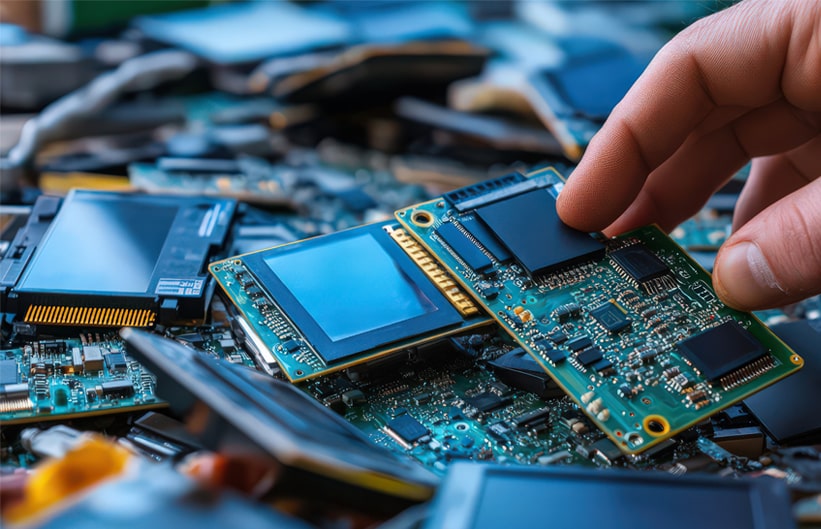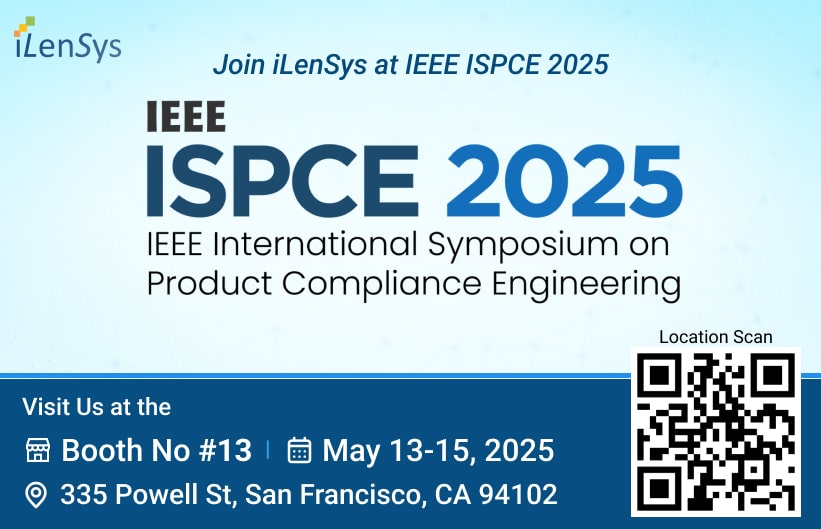Are you checking your medical devices' health? Consult iLenSys to avoid any unforeseen issues and safeguard your devices’ – and your patients' – health.
Introduction
Component obsolescence in medical devices presents a complex challenge that intertwines technological advancement, patient safety, regulatory compliance, and financial management. As technology progresses and manufacturers discontinue products, vital components within medical devices may become obsolete. This issue is particularly critical in heavily regulated sectors like healthcare and medical device manufacturing, where disruptions can cascade through the supply chain, jeopardizing device functionality and compromising patient well-being.
Every component of a medical device, including electronic parts, undergoes rigorous scrutiny through the FDA's premarket approval plan (PMA). This stringent process involves comprehensive reviews, data collection, clinical trials, and quality assessments, ensuring that devices meet rigorous safety and efficacy standards. However, the replacement of obsolete components necessitates repeating this intensive approval process, potentially disrupting supply chains and delaying time-to-market goals.
Adopting a proactive risk-management strategy is essential to mitigate these challenges and ensure uninterrupted manufacturing processes. Nonetheless, navigating the complexities of component obsolescence remains time-consuming and resource-intensive, demanding ongoing diligence and adaptation in the face of technological evolution.
Medical Devices Manufacturing and Legacy Designs
Medical devices are utilized across various sectors such as healthcare, hospitals, homecare, and research and development, encompassing a broad spectrum of applications. Despite advancements, the industry continues to rely on legacy designs. While these devices may remain functional for extended periods, their electronic components often become obsolete and difficult to procure. This challenge contributes significantly to the prevalence of component obsolescence in medical device manufacturing.
Understanding Legacy Devices
Legacy devices are outdated technology systems and equipment that persist in use despite newer alternatives. In healthcare and other industries, these devices endure due to their initial high cost, the complexity of replacing older parts, or their continued reliability for their intended functions. However, their ongoing use poses significant risks, particularly concerning compatibility with modern technologies and vulnerabilities to cybersecurity threats.
Common Examples in the Medical Industry
Legacy devices commonly found in medical settings include:
Pagers: valued for their reliability and cost-effectiveness.
Fax machines: used securely for transmitting medical records.
Analog X-ray machines: older equipment providing essential diagnostic data.
CRT monitors: utilized in various medical imaging and computer systems.
Dial-up modems: employed for remote monitoring in some legacy systems.
Mechanical ventilators: earlier models still serving patient care needs.
Blood glucose meters: older versions still used in diabetes management.
Electrocardiographs (ECG/EKG): analog models trusted for heart monitoring.
Infusion pumps: older models administering fluids and medications.
These devices illustrate the persistence of legacy technology in healthcare, despite the industry's ongoing technological evolution.
Risks Posed by Legacy Devices
Operational Inefficiencies
Using outdated medical devices and systems can cause operational disruptions and safety concerns. For example, older medical imaging equipment may expose patients to more radiation or require repeated scans due to poor image quality. Additionally, these legacy systems might lack interoperability between departments, which can hinder smooth workflow processes.
Security Vulnerabilities
Legacy devices often have outdated security and encryption protocols, making them susceptible to cyberattacks and data breaches. A report from MITRE highlights that these devices continue to be used past their intended support life, lacking defense against current cyber threats. This longevity, combined with differences in support practices between device manufacturers and healthcare providers, means that cybersecurity measures originally deemed sufficient may now be inadequate. Even recently, acquired devices can fall into the legacy category due to inadequate cybersecurity features. Removing them poses risks to patient safety, clinical workflows, and financial stability. Effective management of cybersecurity risks associated with legacy medical devices requires a strategic approach integrating technological advancements and operational strategies to ensure ongoing safety and efficiency in healthcare practices.
Regulatory Non-Compliance
Legacy systems often lack modern security features required for compliance with data protection regulations such as the General Data Protection Regulation (GDPR). Businesses that still use legacy systems are at an increased risk of data loss or compromise, potentially resulting in fines and legal issues.
Maintenance and Repair Challenges
Maintaining legacy systems demands significant resources, time, and specialized staff training. Repairing or replacing outdated parts can be costly. Investing in updated technologies can reduce these expenses and mitigate risks linked to outdated devices.
Impact on Patient Safety
Legacy devices may provide inaccurate data, leading to incorrect diagnoses and treatments. For example, infusion pumps with outdated software might administer incorrect medication doses, endangering patient health. Regularly verifying that medical devices are up-to-date and functioning properly is crucial for ensuring safe and effective patient care.
Components’ Obsolescence in Medical Devices
Component obsolescence revolves around the inevitable discontinuation of critical components within medical equipment due to advancements in technology, changes in manufacturing processes, or shifts in market demand. While this phenomenon is not unique to the medical field, its implications here are particularly profound and require careful consideration.
Identifying Critical Components
Critical components are the essential parts of a device whose failure or breakdown could compromise device functionality or patient safety. Sourcing critical component replacements for medical devices can be challenging, mainly because of the stringent requirements for quality, compatibility with the latest devices or counterparts, and regulatory compliance.
A few examples of critical components include:
Sensors: Sensors are crucial for patient diagnosis and treatment. They’re used in devices like glucose monitors, pacemakers, and imaging systems.
Filter and Valves: They ensure proper filtration and flow control in dialysis machines and respiratory equipment. They play a crucial role in device efficacy and patient safety.
Controllers and microprocessors: They play a crucial role in the operation and control of electronic medical devices such as ventilators, infusion pumps, or diagnostic equipment.
Actuators: They are responsible for accurate movements and control in devices like automated medication dispensers and robotic surgical systems.
Optical components: They are used in devices like endoscopes and lasers for surgeries and provide precise diagnosis and treatment.
In January 2021, President Biden issued Executive Order 14001 aimed at strengthening the resilience of the public health supply chain amidst the COVID-19 pandemic. Following this directive, the FDA spearheaded a collaborative effort across government and industry to establish the Critical Medical Device List (CMDL). This list identifies medical devices whose disruption could lead to severe harm or death for patients or healthcare providers. Developed by a diverse Task Group, including manufacturers, distributors, and healthcare systems, CMDL recommendations encompass criteria for critical device identification, the list itself, strategies for regular updates, and a resilience framework. These recommendations are designed to guide strategic decisions and bolster resilience throughout the medical device supply chain.
Challenges in Sourcing Replacement Parts
Technological Advancement
The rapid pace of technological progress often makes components obsolete sooner than anticipated. This poses a significant risk to the ongoing functionality of medical devices. Manufacturers must carefully navigate this landscape to avoid disruptions in device availability, which could potentially impact patient care and safety. Imagine a scenario where a critical medical device cannot be repaired or replaced due to the unavailability of a necessary component. This highlights the crucial need for proactive planning and robust supply chain management.
Supply Chain Disruptions
Medical device manufacturers rely on a global supply chain that can be susceptible to disruptions from geopolitical events, natural disasters, or pandemics. For instance, during the COVID-19 pandemic, there was a sudden surge in demand for ventilators worldwide, leading to challenges in sourcing essential components like semiconductors due to factory shutdowns and increased demand.
Compatibility Issues
Replacing a component in a medical device requires ensuring compatibility with the existing system. For example, if a valve in a dialysis machine needs replacement, the new valve must seamlessly integrate with both the hardware and software of the device. This demands deep knowledge of the original design and close collaboration with component suppliers.
Regulatory Framework
Meeting regulatory standards adds another layer of complexity to sourcing replacement parts. Replacement components must meet original specifications and undergo rigorous testing, validation, and sometimes re-certification. For instance, replacing a sensor in a patient monitoring system requires extensive testing to ensure compliance with FDA or CE mark standards, which can delay availability and increase costs.
Financial Implications
Managing component obsolescence involves strategic foresight and investment decisions. Manufacturers must weigh options such as stockpiling components, redesigning devices with newer technologies, or finding alternative suppliers—all of which have financial implications. Balancing these decisions is crucial for maintaining competitive pricing, profitability, and sustainability in the market, while also prioritizing patient care and product quality.
Collaborative Solutions
Addressing these challenges requires collaboration across stakeholders—manufacturers, healthcare providers, regulatory bodies, and suppliers. Proactive strategies include establishing clear communication channels, fostering innovation in component design and manufacturing, and investing in long-term solutions like modular device architectures that facilitate easier upgrades and replacements. This collaborative approach is essential for navigating the complexities of sourcing replacement parts in the medical device industry.
Notable Examples of Device Failures
Medtronic Implantable Defibrillators: In 2005, Medtronic recalled several models of implantable defibrillators due to a faulty capacitor that could cause the device to malfunction, potentially resulting in serious health risks for patients.
Guidant Pacemakers and Defibrillators: In 2005, Guidant (acquired by Boston Scientific) recalled multiple models of pacemakers and defibrillators due to defects that could lead to device malfunctions and potentially fatal consequences for patients.
DePuy Hip Implants: In 2010, DePuy Orthopaedics (a subsidiary of Johnson & Johnson) recalled its ASR XL Acetabular System and ASR Hip Resurfacing System due to higher-than-expected failure rates and complications requiring revision surgeries.
Baxter Colleague Infusion Pumps: In 2005, Baxter recalled its Colleague infusion pumps due to a malfunction that could cause the device to stop working, potentially resulting in serious injury or death for patients relying on continuous medication delivery.
These examples highlight the importance of robust quality control, thorough testing, and vigilant post-market surveillance in the medical device industry to ensure patient safety and minimize risks associated with legacy devices.
iLenSys: Elevating Solutions Beyond Expectations
iLenSys offers you a proactive approach to obsolescence management and data-driven insights, taking care of your devices' safety throughout their lifecycle with regular checks and assessments of the parts' regulatory mandates, and helping you stay compliant without any hindrances in your supply chain.
Elevate Your Business Security with Advanced Risk Management
Discover peace of mind with our advanced software that goes beyond identifying alternative components. It actively notifies your procurement team about the precise inventory levels needed to mitigate specific risks. Seamlessly implement changes and maintain operational continuity, empowering your business to navigate uncertainties effortlessly.
Empower Your Production with Continuous Monitoring
Experience uninterrupted production and minimal downtime with our software's comprehensive continuous monitoring, covering 100% of your Bill of Materials (BoM). By continuously assessing and mitigating risks, we guarantee operational continuity, allowing your business to thrive without interruptions.
Identify Potential Risks Faster with Comprehensive BoM Coverage
Our software offers complete coverage of your Bill of Materials (BoM), enabling thorough risk assessment and mitigation. With our first-time scrub completed within 2-3 weeks, you'll receive timely insights into potential risks impacting your production line. Stay informed and proactive with our advanced solutions.
Smart Risk Prioritization for Minimal Downtime
Our tool intelligently prioritizes risks using BoM parameters like EAU and inventory data. By categorizing risks into high, medium, and low priority, it ensures clear, actionable steps to minimize production downtime. Stay ahead with proactive risk management tailored to your operational needs.
Enhanced Cross-Comparison for Efficient Risk Mitigation
Our software surpasses standard practices by cross-comparing BoMs across your organization to pinpoint alternate components and mitigate risks effectively. This advanced approach can reduce the time required for identifying alternative parts by up to 25%, ensuring swift and precise decision-making to keep your operations running smoothly.
Trusted Engineering Excellence
Our expert engineering team guarantees seamless integration and optimal performance of replacement components. They meticulously assess circuit compatibility and verify that replacements meet stringent application standards. Precision in capturing form, fit, and function specifications ensures zero compromise on system performance, delivering reliability and peace of mind.
Explore further about our Obsolescence Management SaaS Application and how it can help you stay ahead of obsolescence.
Conclusion
Ultimately, while component obsolescence poses significant challenges to the medical device industry, it also catalyzes innovation and collaboration. By leveraging technological advancements and fostering a culture of adaptability and foresight, stakeholders can mitigate risks, enhance patient care, and ensure the evolution of safe and effective medical devices in an ever-changing technological landscape.
Talk to ours Obsolescence Management Experts.
By submitting this form, I agree to receive emails about iLenSys's products and services as per the Terms of Use. I can unsubscribe at any time via the 'unsubscribe' link in iLenSys emails or by emailing contact@ilensys.com. I also agree to the Privacy Policy.
Sign up for the latest Blogs, Case studies, Whitepapers, Webinars and Videos.
- Blogs
- Case Studies
- News and Updates
- Videos
- Webinars
- White Papers
-
- Product Environmental Compliance
- Obsolescence Management
- Regulatory & Product Safety
-
-
-
-
-
-
- New Product Development
- Mechanical Design
- FEA Validation
- Benchmarking and Value Engineering
- 3D Scanning and Reverse Engineering
- 3D Printing
-
- Embedded Systems
-
- Industrial Automation
-
- Quality Assurance and Regulatory Affairs
-
- Extended Reality
- 3D Animation & Video Production
- WebGL Development
- Graphics and UI/UX Reality
-
- Technical Documentation
-
- Early Engineering Talent (EET)
-
-
-
- Lab Equipment
- Medical Devices and Equipment
-
- Scientific Instruments
-
- Life Sciences
-
- Static and Mobile Equipment
-
- Material Handling Equipment
-




